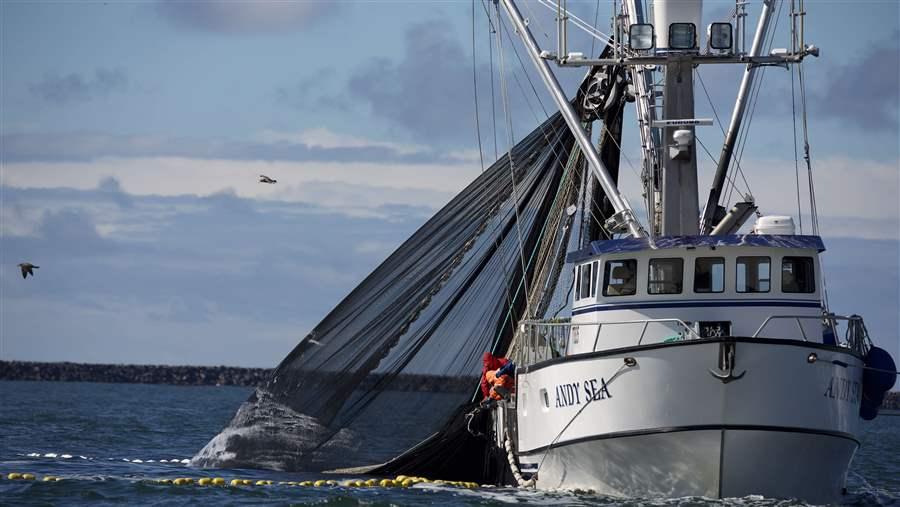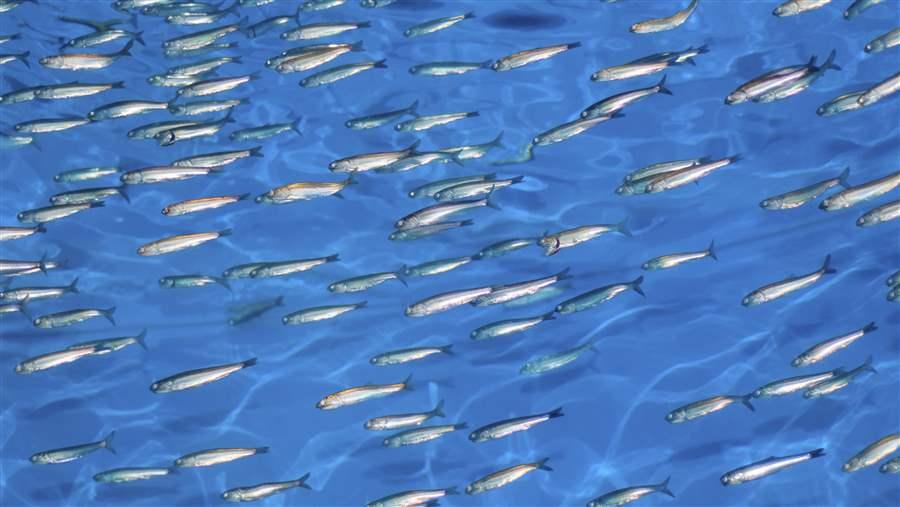Oregon Gives Anchovy a Shot at Sustainability
New Columbia River catch limits should boost ocean health and help seabirds, whales, and salmon

A dramatic increase in the northern anchovy catch from the Lower Columbia River during summer 2016 has prompted Oregon to set new precautionary landings limits for this crucial forage fish.
© Michael O’LearyIn the summer of 2016, an unexpected surge of northern anchovy appeared in the Lower Columbia River near Astoria, Oregon, attracting humpback whales, brown pelicans, and other wildlife that depend upon tiny forage fish for their survival. The arrival of anchovies in the ecologically rich Columbia River estuary also drew commercial seine boats, which landed approximately 5,600 metric tons of this crucial forage fish in less than four months.
This was a striking increase over Oregon’s average annual 67-ton catch of the northern subpopulation of northern anchovy over the previous 16 years. The sudden jump caused added concern because so much of the catch came from a short stretch of the Lower Columbia River. In fact, nearly 60 percent of the total amount of anchovies that commercial fishermen were allowed to catch off the entire coasts of both Oregon and Washington came from this relatively small area, raising questions about localized impacts on dependent predators and other species. Further, because of a lack of current information on the health of the anchovy stock in Pacific Northwest waters, managers simply aren’t sure how many fish are out there, creating additional uncertainty about fishing impacts. These questions and concerns in turn prompted Oregon fishery officials last fall to review, and consider making changes to, the state’s anchovy fishing rules.
Northern anchovy are an essential part of the California Current Ecosystem, which follows the West Coast from the U.S.-Canada border to Mexico. These nutrient-rich fish are also critical to the health and resilience of the Columbia River estuary because they are a vital food source for more than 50 species of Pacific Ocean wildlife, including endangered salmon. Scientists consider northern anchovy the most important prey species for California Current seabirds and one of the two most essential food sources for humpback whales, dolphins, and other marine mammals.

Northern anchovy are considered the most important food source for West Coast seabirds.
© iStockAnchovies are more than a nutritious meal. These and other schooling fish also provide cover for ocean-bound juvenile salmon that otherwise would be easier targets for predators such as terns and cormorants. Despite these critical roles, we know little about the health of the northern anchovy subpopulation that makes its home off the Oregon and Washington coasts. In fact, the northern subpopulation of anchovy hasn’t been counted since the 1970s.
The Oregon Department of Fish and Wildlife responded to this uncertainty—and concerns over intensive fishing in the summer of 2016—by implementing temporary anchovy fishing limits in the Columbia estuary last fall. And in June this year, the Oregon Fish and Wildlife Commission made these common-sense limits permanent, capping anchovy landings from this area at 5 metric tons per fishing vessel per day and 10 metric tons per week.
As a result, Oregon’s Lower Columbia River anchovy limits now match those in neighboring Washington. The commission’s farsighted decision gives federal fishery managers the opportunity to assess the population and adopt science-based measures that can better guide management of this crucial prey species. And it helps the marine mammals, seabirds, and salmon for which this little fish really is a big deal.
Paul Shively directs ocean conservation work in the Pacific for The Pew Charitable Trusts.











